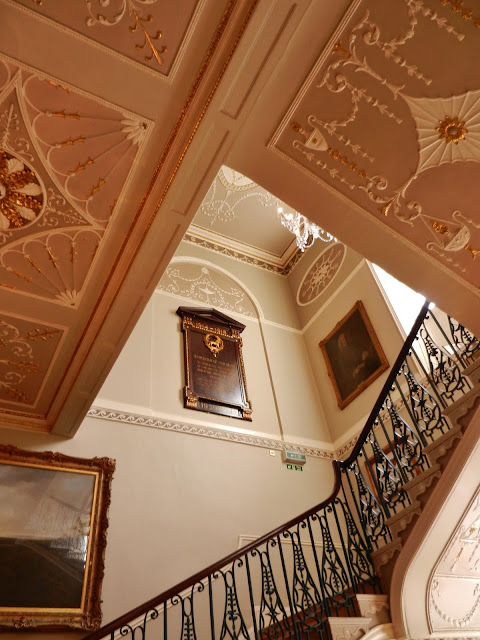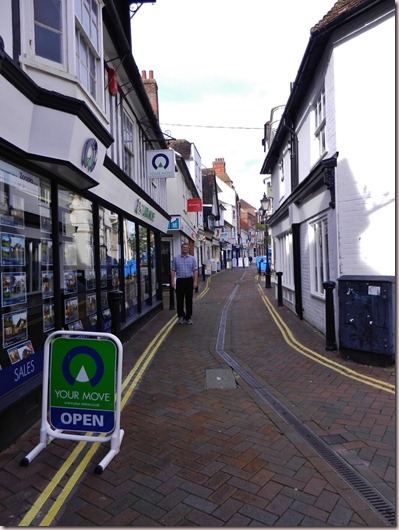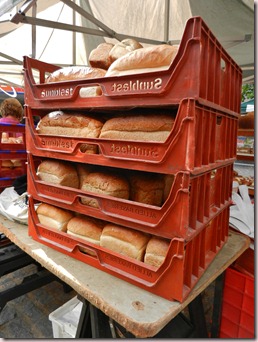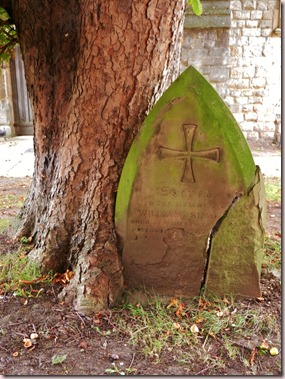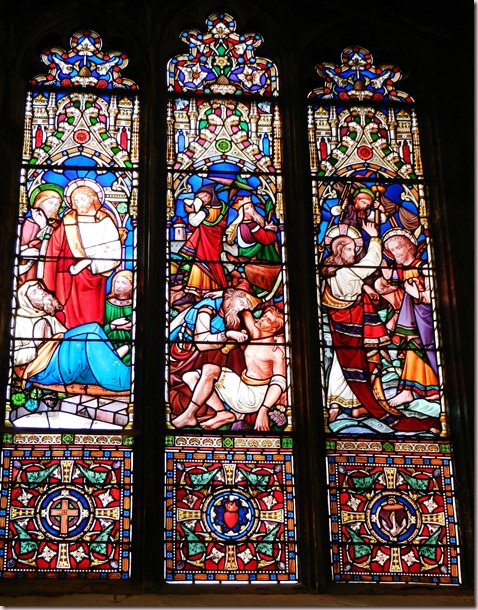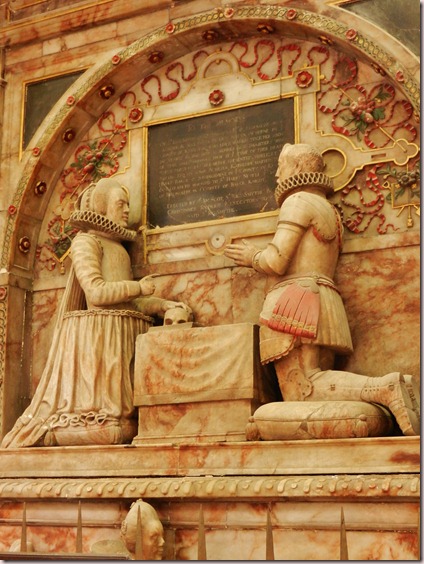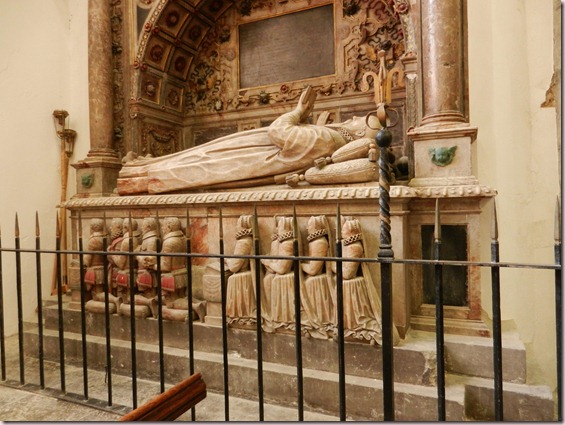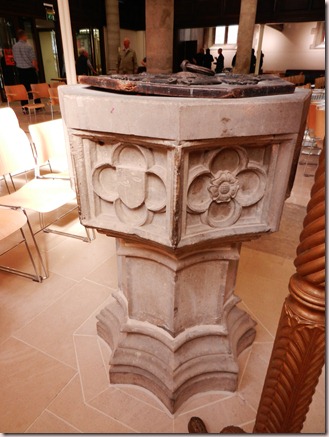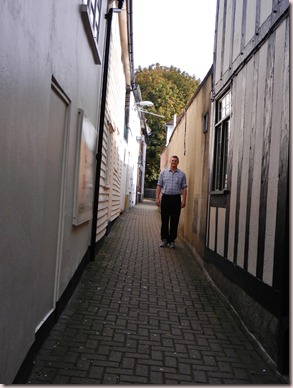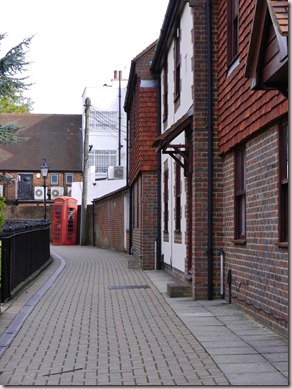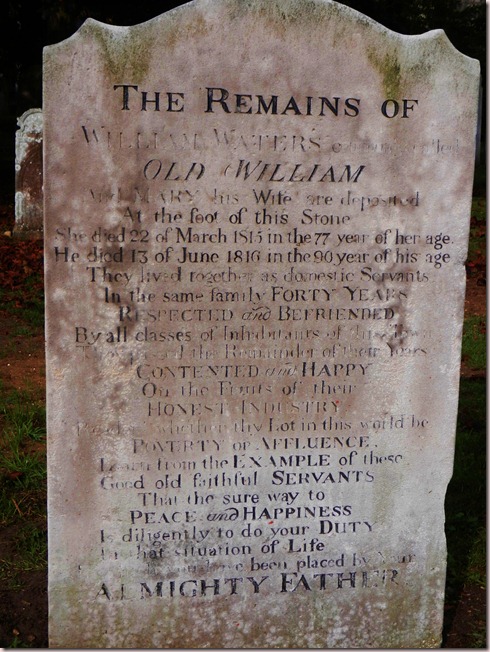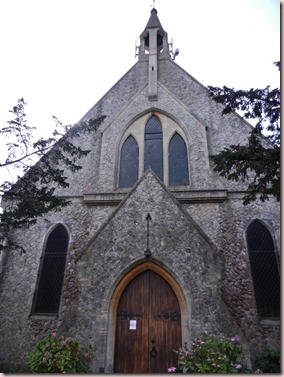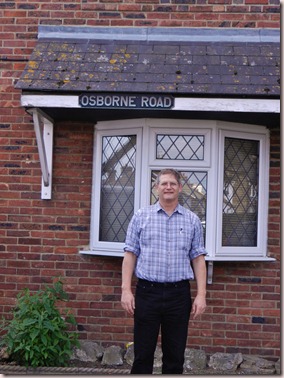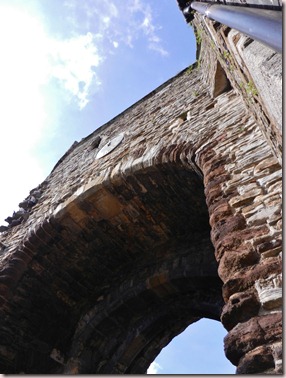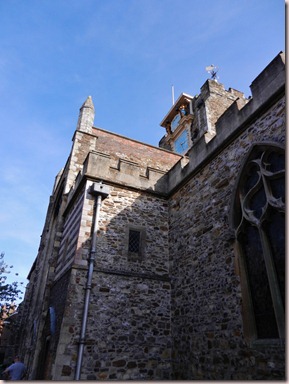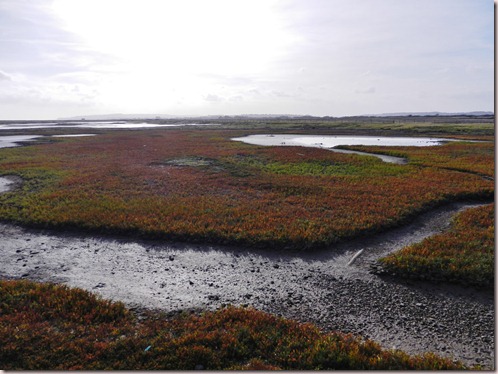Did you notice the water theme going on there?
It rained heavily on Sunday night and we awoke to a grey morning. Nevertheless, we trooped on and walked down some paths to Wells Cathedral. This is perhaps the finest of all the great British cathedrals.
It is surrounded by an actual moat!
The foundation of this church goes back to Saxon times, around 705 AD. The present cathedral was begun about 1175 and was designed in the revolutionary new Gothic style.
The first building phase took about eighty years and about 300 of the original medieval statues remain today.
The pigeons really like them!
We wandered around and got completely lost.
It is that big.
Plus, we get lost easily.
We went through an archway and found this.
The Vicar's Close.
A little research discovered that this has its origin in the 14th century, when the Vicar's Choral was founded. Each of the 42 singing vicars was given a tiny house with a dining hall at one end of the quadrangle and a chapel at the other. The purpose of this beneficence was to protect he vicars from the wordly temptations that confronted them when they lodged in the town. The front gardens were added a couple of hundred years later. Members of the current Vicar's Choral still live here, along with other cathedral employees.
This is the only continually inhabited, completely medieval street in England.
This is part of Wells Cathedral School, which is right next to the cathedral and, as well as educating local children, trains some of them as choristers for the Cathedral Choir. By "choristers", they mean vocalists. Music is an important part of Wells Cathedral.
I deeply regret missing evensong.
There is a clock at Wells Cathedral that is very famous for being the second oldest clock mechanism in England, and probably the world, to be still in use in its original condition.
This isn't it.
Go here if you want to see a photo of it.
This is the octagonal Chapter House that was finished in 1306 and was the meeting place for cathedral affairs. The Bishop would sit under the picture in the window to the left of the column and the canons would each sit in his designated spot under the smaller metal plaques.
This is an illegal photo; I was too cheap to pay the photography fee so I only sneaked a few inside photos. Actually, I was starting to get tired of the constant fees we were having to pay for parking and entrance and, now, photography.
It brought out my inner rebel.
Anyway, while Jeff and I were standing in this room, quite awed, and, thankfully, after sneaky photo-taking had ended, an elderly man came in. We asked him about the space and he proceeded to tell us stories about his war experiences and also about the Chapter house. Just one of the many helpful people that delighted us as we wended our way around the south coast.
The acoustics in this room are astounding. Those medieval architects knew a thing or two!
This was somewhere in Wells.
How could you not want to go in and buy something?
Goodbye Wells, we wish we could have spent more time with you.
Hello Bath.
By now, we are unwilling to pay to see anything.
Especially old churches.
So, when someone told us about the old Guild Hall, now the Town hall, which we could wander around for nothing, we were on it like whipped cream on a bun.
Behold, the working man's answer to the upper class's Assembly Rooms.
They weren't allowed into the former, so decided to build their own gathering place.
And it is stupendous.
The craftsmanship is divine.
And it is free!
This was on a bench outside the Town hall.
I love the understated British humour.
I don't even know what this is, but I like it.
It may be in the Roman Baths, for which we declined to pay but I may have sneaked another photo!
By this time we were feeling a little peckish and made the mistake of accepting a free sample of some cake from this pastry shop.
We succumbed in a big way!
We sat on this step in the square, listening to the buskers, and a passing lady offered to take our photo.
Our enjoyment must have been obvious!
Black Forest gateau for Jeff.
Something with a French name for me, but it was really a Napolean of the highest order.
In keeping with my new rule (sit and listen to the buskers) we sat for well over an hour and listened to some excellent music. Not only that, but we had some great conversations with our bench-mates. No one is a stranger for long when you're a tourist.
The town square is filled with music all day long. Apparently, the buskers have a meeting in the morning and decide who will play each hour.
When we first arrived, the musician was playing an Irish flute.
This guy played some pleasing melodies and had a unique voice.
Then this young woman played a hang, pronounced "hong". It is like an inverted steel drum and resembles a flying saucer. The instruments are made by a couple of men in Switzerland and they only make a few hundred each year. The only way you can buy one is to go to Switzerland. I've never seen one before, but it is haunting and she played and sang beautifully.
Watch a couple of masters at work.
Aaand, a shorter one for good measure.
The hang player did not get to finish her hour because the rain started.
We ran to the car park and managed to reach the car before it became a downpour.
And on we drove to Aston Somerville, where Jan had a nice hot dinner waiting for us.











